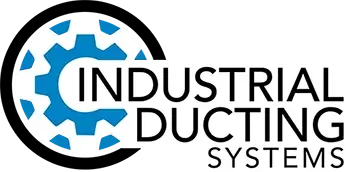Pet Food Processing Ducting Solutions
Pet food processing combines elements of food manufacturing with unique challenges related to ingredient diversity, processing temperatures, and product safety requirements. Modern pet food production involves complex operations including ingredient grinding, mixing, extrusion, coating, and packaging that generate various airborne contaminants including organic dusts, cooking vapors, and coating particles.
The industry has experienced significant growth and consolidation, with larger facilities processing diverse product lines that may include dry kibble, wet food, treats, and specialized diets. This diversity creates complex ventilation challenges as different products may generate dramatically different emission characteristics. Additionally, the trend toward premium and natural pet foods has introduced new ingredients and processes that may create previously unencountered air quality issues.
Pet food processing faces unique regulatory challenges as products must meet both food safety requirements and occupational health standards. The industry also contends with significant combustible dust hazards from organic ingredients and finished products, requiring comprehensive explosion prevention measures.
Specific Air Quality Requirements & Regulations
Pet food processors must comply with FDA regulations under the Food Safety Modernization Act (FSMA), specifically the Preventive Controls for Animal Food rule (21 CFR 507). These regulations establish comprehensive food safety requirements that directly impact ventilation system design and maintenance.
OSHA's combustible dust National Emphasis Program applies extensively to pet food processing due to the prevalence of organic dusts from grains, proteins, and other ingredients. Facilities must conduct dust hazard analyses and implement explosion prevention measures throughout the production process.
Air quality requirements often follow similar standards to human food processing, with additional considerations for ingredient-specific hazards. Some pet food ingredients may generate allergens or respiratory sensitizers that require enhanced exposure controls.
Temperature requirements in pet food processing are significant. Extrusion operations typically require 250-350°F, while coating operations may involve temperatures up to 400°F. Drying operations often require high-temperature air recirculation systems that must be carefully integrated with ventilation systems.
Construction Process & System Design Considerations
Pet food processing facilities require ventilation systems that address the entire production process from ingredient receiving through finished product packaging. The construction process must accommodate the continuous nature of pet food production while maintaining strict sanitary requirements.
Ductwork design must incorporate features that facilitate cleaning and sanitization, similar to human food processing requirements. All surfaces must be smooth and accessible for cleaning, with appropriate drainage provisions to prevent standing water or accumulated material.
Installation must coordinate with the complex process equipment typical in pet food manufacturing, including extruders, dryers, coating systems, and packaging equipment. Temporary ventilation systems may be necessary during construction to maintain worker safety and production requirements.
Explosion prevention measures are critical due to the combustible nature of most pet food ingredients. These systems must be integrated into the overall facility design while maintaining sanitary requirements and production efficiency.
Technical Specifications & Performance Requirements
Pet food processing ventilation systems typically require 100,000 to 800,000 CFM depending on facility size and production volume. Individual process areas may require 10,000-50,000 CFM depending on equipment size and emission characteristics.
Ductwork materials must meet sanitary requirements while withstanding the abrasive nature of pet food ingredients. Stainless steel is preferred for direct product contact areas, while galvanized steel with appropriate coatings may be suitable for general ventilation applications.
Transport velocities must be sufficient to prevent ingredient accumulation while maintaining energy efficiency. Typical design velocities range from 3,500-4,000 FPM for main lines carrying organic dusts and up to 3,000 FPM for systems handling lighter particles.
Static pressure requirements typically range from 12-20 inches of water column, depending on filtration requirements and system complexity. Explosion prevention systems may require additional pressure capabilities and specialized venting arrangements.
How Industrial Ducting Systems Delivers Solutions
Industrial Ducting Systems understands the unique challenges of pet food processing, where air quality control must balance worker safety, product quality, and regulatory compliance. Our expertise addresses both sanitary requirements and explosion prevention needs.
Our 2D CAD design services provide detailed system layouts that integrate with your facility's production processes and sanitary requirements. We understand the importance of maintaining cleanable surfaces while providing effective dust collection and emission control.
Our material expertise ensures proper selection of sanitary materials that comply with food safety regulations while providing effective dust collection performance. We provide comprehensive quantity take-offs that account for specialized sanitary construction and explosion prevention equipment.
Our logistics coordination addresses the unique scheduling challenges of pet food processing, understanding that production interruptions can impact product quality and delivery schedules. We provide installation approaches that maintain sanitary conditions while ensuring effective ventilation performance.
Experience the Industrial Ducting Systems Advantage
Sanitary design, explosion prevention, ingredient-specific expertise—discover why pet food processors trust us with their most critical dust collection and safety requirements. Let's design a system that exceeds your expectations.
